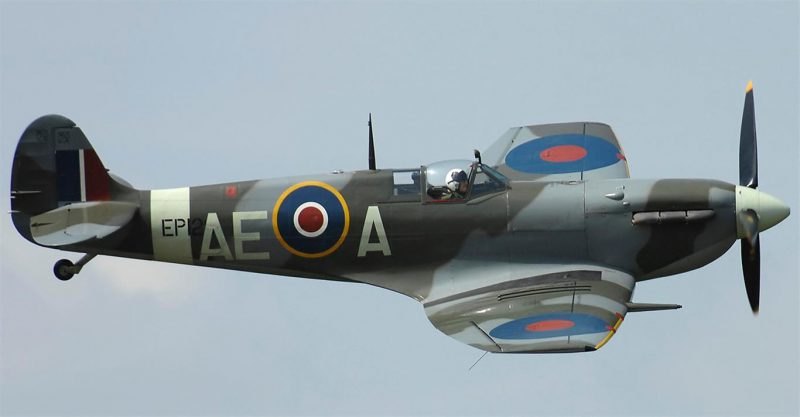Jimmy Jeffrey crashed his Spitfire in Normandy during World War II. A group of villagers risked their lives to save him from the Nazis that occupied France at the time.
That plane will fly over Orbec and dip its wings over the site where he crashed in July 1944. It will pay tribute to the pilots who defended Britain in the skies and on the ground.
The flight is the outcome of a £3 million project to restore Spitfire NH341.
To prepare for the commemoration, the plane, which was involved in 27 combat missions in WWII, was displayed for the first time at the Imperial War Museum’s Duxford Aerodrome – one of the most important of the RAF’s wartime bases.
Veterans and aircraft connoisseurs audibly gasped when the plane was brought out of the hangar and onto the runway.
Gerry Abrahams, 94, is a former Lancaster pilot. He served in the 75 Squadron from 1944 to 1945. He said that hearing the engine starting up was very emotional for him. He’s glad they brought back something from the war to remind current generations of all those who sacrificed their lives in the war.
Ron Dearman, 93, flew a DC3 Dakota in the 267 Pegasus Squadron. He feels that everyone should know about the Spitfire and how it helped the Allies win the war.
Spitfire NH341 had been flown by nine pilots of the Royal Canadian Air Force’s 411 Grizzly Bear Squadron, including Warrant Office Jeffrey. He was shot down in the plane while in a dogfight with a Focke-Wulf 109 near Caen.
His squadron was part of 126 Wing which was the highest scoring air force wing of the Allies in WWII. It is credited with 336 enemy aircraft destroyed. NH341 is credited with shooting down a pair of Messerschmitt 109s.
Jeffrey bailed out after his plane was disabled by enemy fire. He was taken in by the Soetards who farmed in the area.
The French Resistance helped Jeffrey avoid capture by the Nazis. They managed to take him into town for a haircut and to buy cheese, right in front of the Germans. Jeffrey was able to return to his unit at the Beny-sur-Mer airfield which was occupied by the Allies after the D-Day invasions.
Jeffrey survived the war and came home to his wife, Jean, in Canada.
Three years ago, Keith Perkins bought NH341. Perkins is the owner of Aero Legends which allows the public to fly vintage planes like the Tiger Moth, Harvard and Spitfire.
It required dozens of craftsmen to restore the Spitfire to flying condition.
Perkins said that he bought the plane to restore it without knowing the history of the plane. Learning that history has been fascinating for Perkins, “In its short but eventful operating life NH341 it touched many lives.”
Flt Lt H C “Charlie” Trainor (who later became Squadron Leader) and Flt Lt A B “Bruce” Whiteford are two of the other pilots to fly NH341.
Trainor received the Distinguished Service Order (DSC) DFC and Bar. He earned his “Ace” status in NH341 after getting eight victories over German airplanes, including two ME109s.
Whiteford flew NH341 more than any other pilot. The restored plane features “EO” and “Elizabeth” markings on it in honor of his wife.
Only one Canadian who flew NH341 in battle is still alive, Flg Off T R “Tommy” Wheler.
Wheler is 96. He was honored with a flypast by the RAF Red Arrows when he visited Britain in 2015.
On June 24, 1944, Wheler destroyed several German mechanized transports. He was eventually shot down. He returned to his unit, escaping capture three times in what has become known as “Wheler’s Walk.”
Flt Lt Antony “Parky” Parker MBE will captain the maiden flight of the restored NH341. He called the Spitfire the most impressive airplane to have flown and that it symbolizes a lot about the war years, The Telegraph reported.
He said that pilots that had been shot down by other planes wished they had been shot down by a Spitfire.
